Physical Sciences Inc. (PSI)’s mission is to invent or adapt emerging technologies to address mission requirements of important national priorities. This issue of PSI’s quarterly Newsletter highlights two technology platforms that PSI teams have developed that we are transitioning to acquisition programs within the DoD. They are current examples of a continual process of PSI’s technology maturation and market adoption for national security, health and environmental applications.
High Power and Energy Density Battery
The Imperia® Batteries Division of PSI has developed a new High Power and Energy Density Battery for use in demanding Unmanned Undersea Vehicle (UUV) applications. The battery merges technologies developed under PSI IR&D and multiple Small Business Innovative Research (SBIR) programs, and is being matured in an ongoing OSD Rapid Innovation Fund (RIF) Program. The Battery combines Imperia’s High Active (HA) coating technology with a unique Non-Flammable (NF) Electrolyte, resulting in a high power (600 W), high energy, 250+Wh, battery in a compact package displacing less than 650 cubic centimeters. The battery incorporates a custom Battery Management System (BMS), tailored for use in UUV systems. Applications include any requirement for a high energy, high power density battery, but is uniquely suited for use with manned and unmanned systems requiring the added safety brought by Imperia’s non-flammable electrolyte, which significantly reduces the chance of propagating battery failures caused by cell damage or abuse.
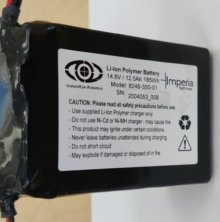
UN Certified Mission Battery
The battery has been extensively tested in Imperia’s new Li-ion Battery laboratory and production facility in Wilmington, MA, and is currently undergoing USN’s 9310 testing for approval. A variant of this battery has also been developed for use with PSI’s InstantEye® small Unmanned Air System (sUAS). The combination of the high energy density and high power density of the InstantEye Mission Battery nearly doubles the flight endurance of the InstantEye sUAS. New battery and energy system designs are constantly emerging incorporating Imperia’s HA Li-Ion and NF Electrolyte technologies to meet demanding DoD Requirements.
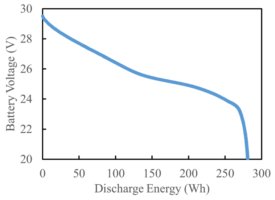
Representative battery discharge performance
For more information about Imperia® Batteries, please contact Christopher Lang, Area Manager, Energy Technologies: lang@psicorp.com
Compact, High-speed, Staring Mode Visible-near Infrared/Shortwave Infrared Hyperspectral Imager
PSI has developed a compact, high-speed, staring mode visible-near infrared/shortwave infrared hyperspectral imager (VNIR/SWIR HSI) suited for operation from small to medium unmanned aircraft systems. Applications include airborne mine and obstacle detection, intelligence, surveillance and reconnaissance, and targeting/cueing. The sensor has undergone multiple flight tests and advanced capability demonstrations with the government in the context of these applications. PSI is currently engaged in technology development efforts to tailor and harden the HSI platform for a specific DoD mission. The unique sensor architecture features a dual channel (425-850 nm VNIR, 0.9-1.7 mm [SWIR]) grating based HSI employing a digital micromirror device to project parallel scanning slits over the field of view (FOV). This architecture enables staring mode operation, which results in higher image quality and spatial resolution than standard push broom grating HSI sensors. In addition, the parallel slits enable significantly higher hyperspectral data acquisition rates than competing push broom HSI’s, resulting in faster achievable speeds of advance and areal coverage rates. PSI’s solution includes automated detection algorithms to identify targets of interest from typical scene clutter.
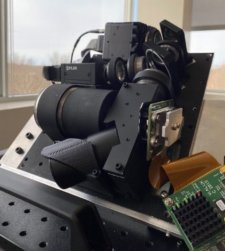
VNIR/SWIR HSI Sensor
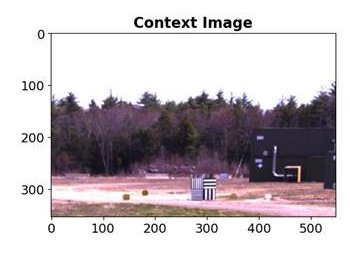
Context image from HSI testing at PSI’s Epping, NH range testing facility
Towards the maturation of the VNIR/SWIR HSI platform, PSI has conducted regular testing at our Epping, NH range test site, imagery from which is shown below. The Epping facility enables imaging at standoff ranges consistent with mission relevant aircraft altitudes. The technology development team has been imaging spatial resolution targets as well as surrogate targets and obstacles to characterize the performance of the sensor and validate the automated detection algorithm. In addition, the team has initiated a new image fusion capability using a boresighted high-resolution RGB imager to increase pixels on target and enable application of shape recognition algorithms.
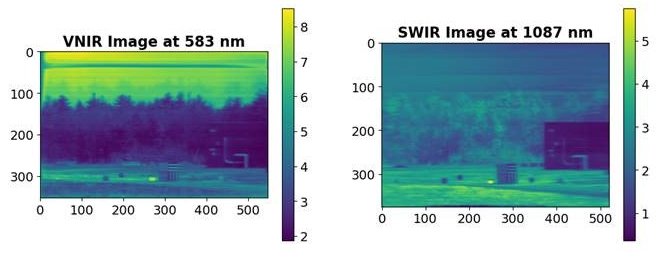
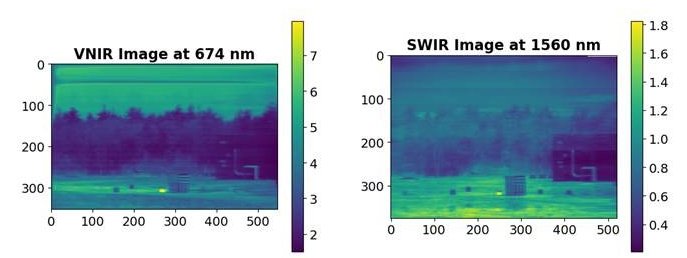
A selection of spectral images of the FOV corresponding to the context image above where the wavelengths are noted in the titles
For more information about PSI’s VNIR/SWIR HSI Sensor, please contact Dr. Julia Dupuis, Vice President, Tactical Systems: jdupuis@psicorp.com
Contract News
PSI recently received the following research contracts:
“Rapid Emergency Evacuation Litter” from the U.S. Marine Corps.
“Real-time Volumetric IR Absorption Nanoscope for in-situ Study of Plant/Microbe Interaction and Metabolism” and “Integrated Microfluidic Platforms on Thin Transparent Membranes” from the Department of Energy
“Directly Applied Separator in Lithium Ion Battery Manufacturing” from the Defense Logistics Agency
“Negative Electron Affinity Vacuum Microelectronics” from the Missile Defense Agency
“Thermochromic Coatings for Emissivity Modulation” from the Defense Advanced Research Projects Agency
For more PSI news, visit www.psicorp.com/news









